Indoor flowers with orange flowers
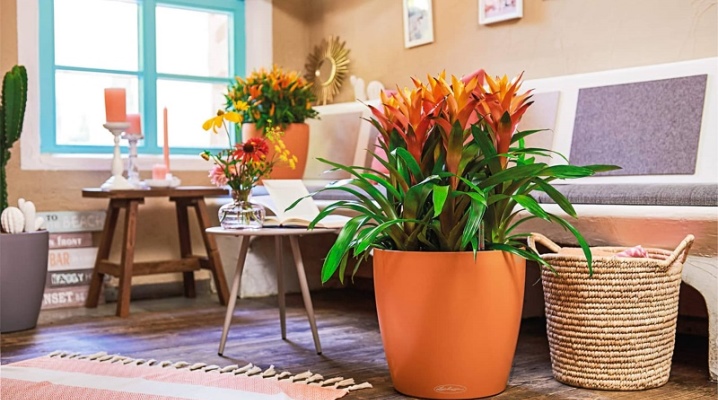
In order for the house to have a comfortable and cozy atmosphere, it is not enough just to make designer repairs, install beautiful modern furniture. You need something more - little things that give the house warmth and create a good mood. And indoor plants do an excellent job with this task. Among their large assortment, I would like to talk about indoor flowers with orange blooms.
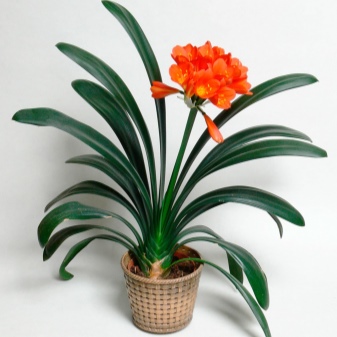
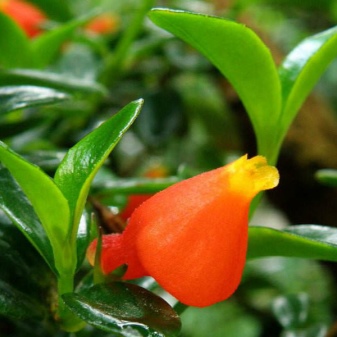
Peculiarities
The home plant with orange flowers is a gem of any plant collection. Many of the growers, both professionals and amateurs, choose just such for their home. What is their secret, and why are they so attractive? It's all about the features:
- create a festive atmosphere in the house;
- fill it with warmth;
- thanks to the bright and sunny color, they give notes of excellent mood.
For those looking to expand their collection with an extraordinarily beautiful and inspiring orange-flowered indoor plant, the breeders have gone to great lengths to create many varieties.
There is a fairly wide selection and assortment of flowers on the modern market, which are characterized by orange buds.
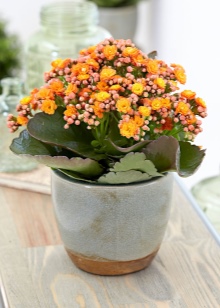

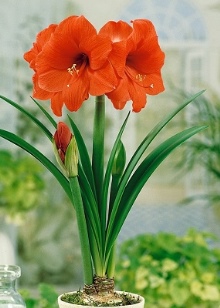
Varieties
In this article, we want to tell you about the brightest and most popular types of orange flowering indoor plants. Having carefully read the information, you can choose for yourself exactly the one that is most suitable for your home.
Shade-loving
Plants that are part of the shade-loving group are distinguished by the fact that direct sunlight is unacceptable. It is better not to install them on windowsills or other sunny places. A shaded area should be chosen, and artificial lighting is also suitable as a light. The group of shade-loving plants with orange flowers includes such species.
- Kalanchoe Blossfeld. Refers to succulents, the foliage of which can be wide and fleshy or cylindrical. It is able to accumulate water in the leaves, so it is not afraid of drought. Kalanchoe blooms brightly for a long period from February. You can propagate a flower from leaves and cuttings.
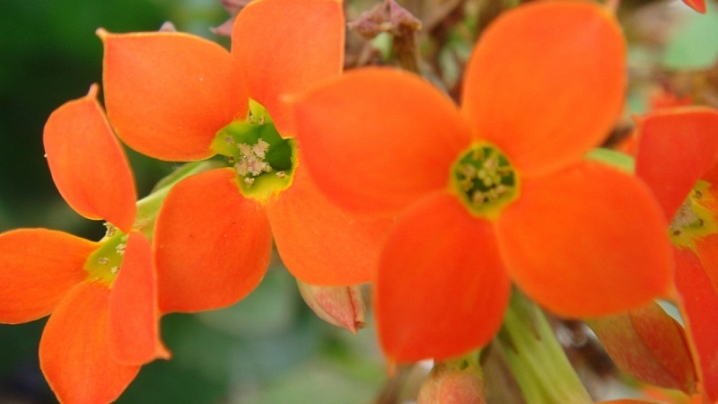
- Eschinanthus is beautiful. Grows in tropical forests, loves moisture and warm climate. It is characterized not only by beautiful yellow-orange flowers, but also by the presence of many small leaves of light green color. To grow a plant at home, you need to purchase a special pot in the form of a hanging basket or a high stand. It grows quickly, its vines should hang down to create the desired effect. The shoots of the plant reach 70 cm. It is not difficult to take care of the escinanthus, the main thing is to constantly spray it.
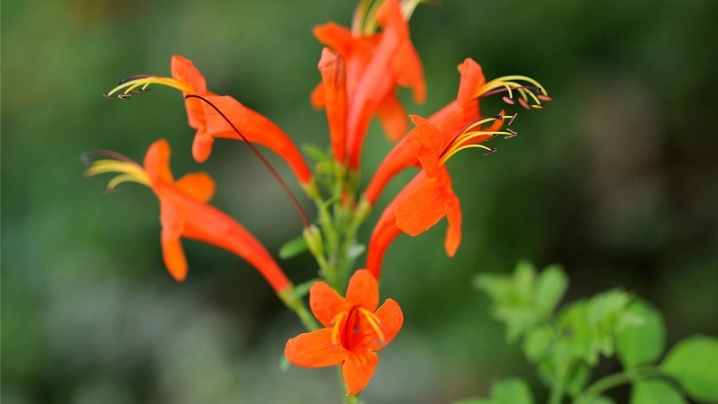
- Clivia. There are many types. The plant attracts not only with its flowering, but also with massive leaves of dark green color, the length of which can be from 40 to 50 cm, and the length of the peduncle up to 60 cm. It blooms in winter, in February. To propagate clivia, you need to apply the method of dividing the rhizome. To make her feel good, she needs to be watered moderately, installed in a bright but shaded place and controlled the temperature regime.
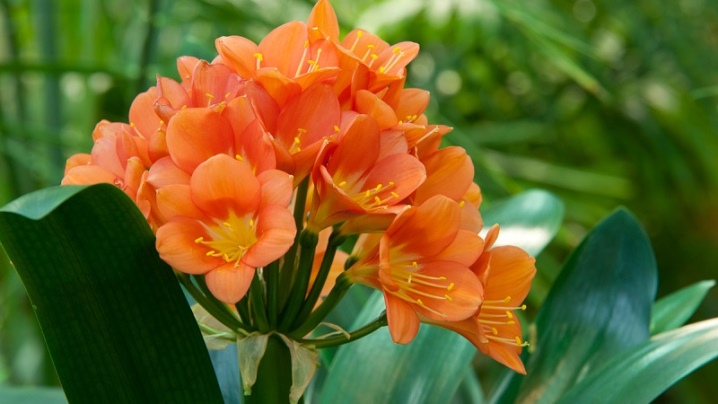
- Abutilon. This is one of the varieties of indoor maple. It is quite compact, it looks like a branchy bush. It blooms very profusely and throughout the year. Flowers are large enough. The plant must be watered abundantly, fertilized and not placed in a place where the sun's rays fall. High air humidity is detrimental to abutilone.
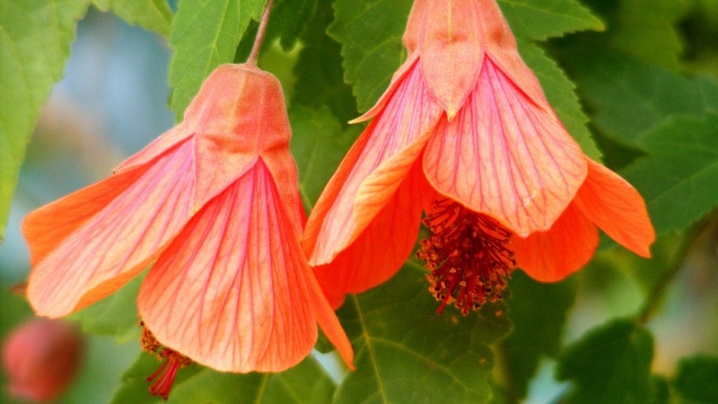
Sun-loving
This species is the complete opposite of the previous group, it needs direct sunlight on them - It is in this atmosphere and warmth that the plant feels comfortable and, as a result, pleases with beautiful flowering. I would like to note such representatives of the sun-loving type of flowers:
- Strelitzia. It is a very beautiful plant with exquisite flowering. Very often it is also called poetically - "bird of paradise". The bud has two colors - bright orange with blue. The leaves have an oval shape and a bright green hue. The height of the strelitzia reaches 100 cm. It can bloom three times a year, of course, provided that it is properly looked after. A plant for active growth requires abundant watering, direct sunlight and moderate air humidity.
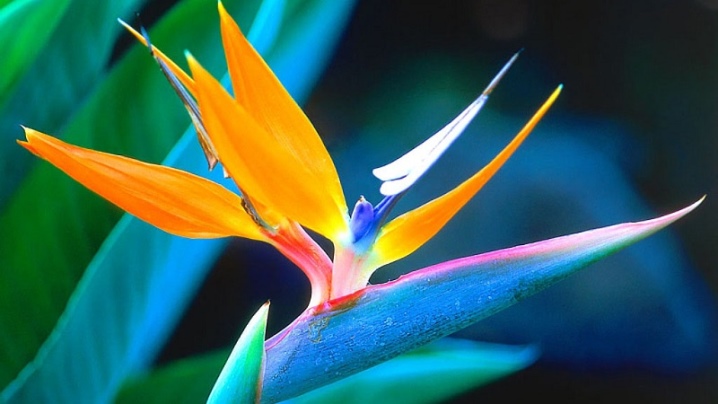
- Blooming crossandra. Refers to tropical plants. In the course of growth, it forms a small bush up to 70 cm high. There are so-called dwarf species, the height of which does not exceed 35 cm. The surface of the leaves is glossy, the color is dark green. It begins to bloom in May. As for care, the flower is quite capricious, it requires a lot of attention and proper care. Crossandra needs to be watered often, observe the required temperature regime. If you do not adhere to all the rules, this representative of the flora will not just stop giving color - it will begin to dry out and may die.
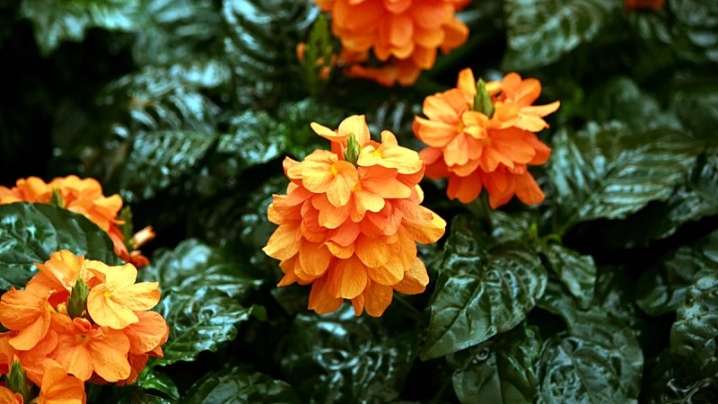
- Lantana. It is characterized by a spherical bloom with all shades of orange. Height up to 50 cm. The flowering period occurs at the end of spring - autumn. This means that if you create the most comfortable growing conditions for a flower, it will delight you with beautiful little flowers for six months. Lantana needs frequent watering, dry air. As for the temperature regime, you need to ensure that the air temperature in the room is not less than 17 ° C and does not exceed 28 ° C.
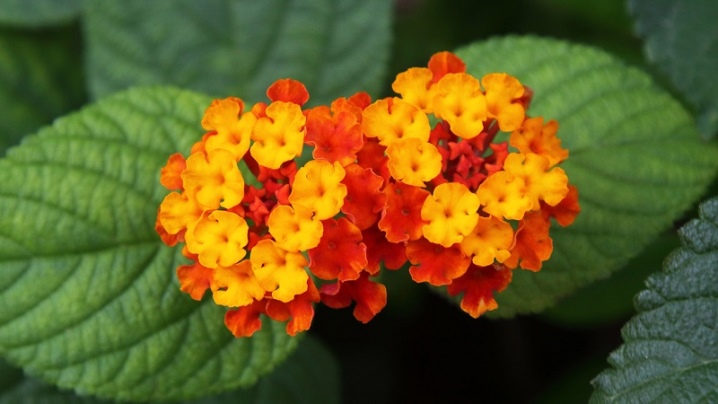
- Nematantus. In shape, it can be similar to a liana, shrub or dwarf shrub. It is characterized by a long stem, thin long peduncle and bright green leaves. The flower is thermophilic, it needs constant watering and feeding. During the active growing season, nematanthus should be sprayed frequently.
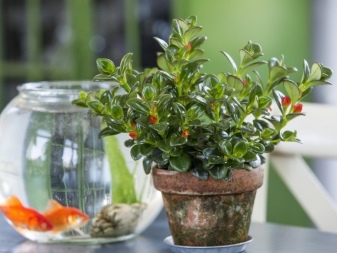
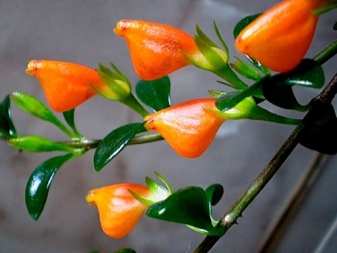
Bulbous
Almost all indoor plants, which are characterized by the presence of orange flowers, propagate by seeds, leaves or cuttings. But there are those that can be propagated with the help of an onion. These plants include the following.
- Hippeastrum is homemade. It is an extremely beautiful flower. It consists of several spreading stems, on each of which leaves appear. If the plant is doing well, a new tongue-shaped leaf will sprout from the stem every month. Plant height is no more than 120 cm. It blooms for a long time, throughout spring, summer and autumn. But winter is a period of rest. The plant needs moderate watering, bright light, including direct sunlight, constant spraying and feeding.
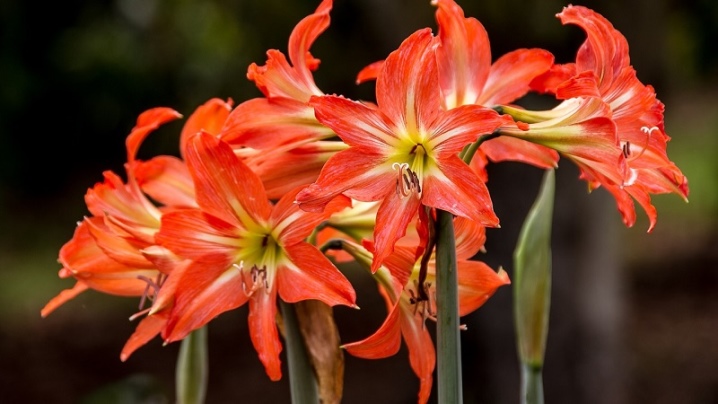
- Valotta. This is an unpretentious and easy-to-care flower that can be recognized by its narrow leaves, their length is from 40 to 50 cm, and by a tall peduncle with 3-6 bright orange flowers. The diameter of each flower is up to 8 cm. It rarely pleases with flowering, only once a year - in summer or autumn.
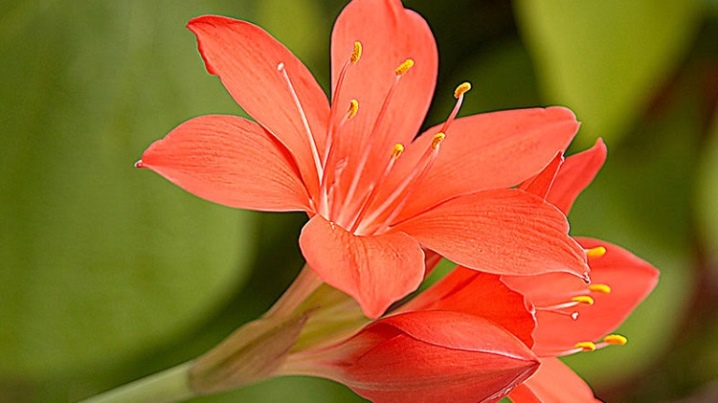
- Lachenalia. Part of the Liliaceae family, plants can be grown both in a pot on a windowsill and, if desired, transplanted into an open area. The plant is unpretentious to care for, it blooms beautifully with bells. Budding and flowering begin in December.
When creating comfortable conditions for growth on New Year's Eve, lachenalia will delight you with incredibly fragrant and unusual flowering.
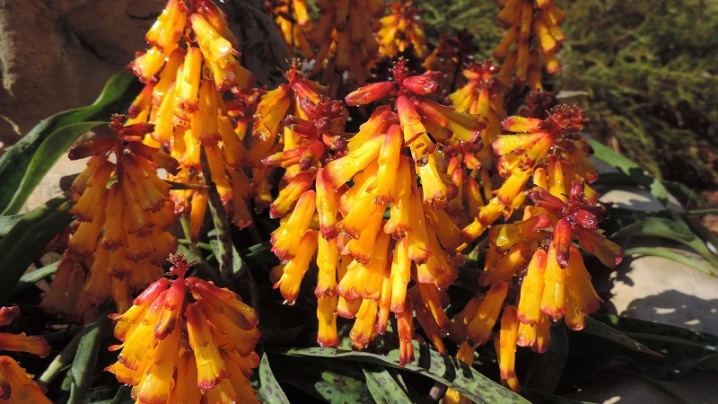
General rules of care
In order to contemplate and admire the beautiful orange flowering often and longer, each of the above plants must be properly looked after. Here are the basic guidelines and rules of care:
- observe the temperature regime;
- water properly;
- watch the humidity in the room where the plant is;
- be sure to feed - top dressing should also be chosen, taking into account the characteristics of each species, it can be organic or mineral supplements;
- if a flower needs a lot of moisture, do not forget to spray it;
- transplant and propagate only in a certain period, which is also individual for each representative of the flora.
For more detailed information on flower care, you can use the Internet resource, consult with a professional florist, or purchase a special magazine about plants.
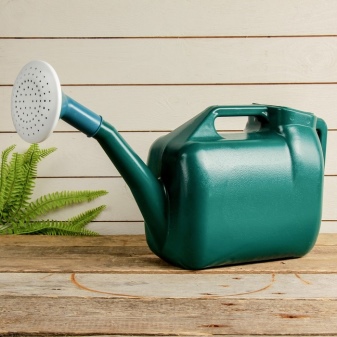
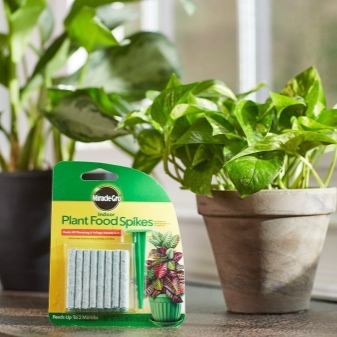
For information on how to achieve abundant flowering of Kalanchoe Blossfeld at home, see the next video.































The comment was sent successfully.